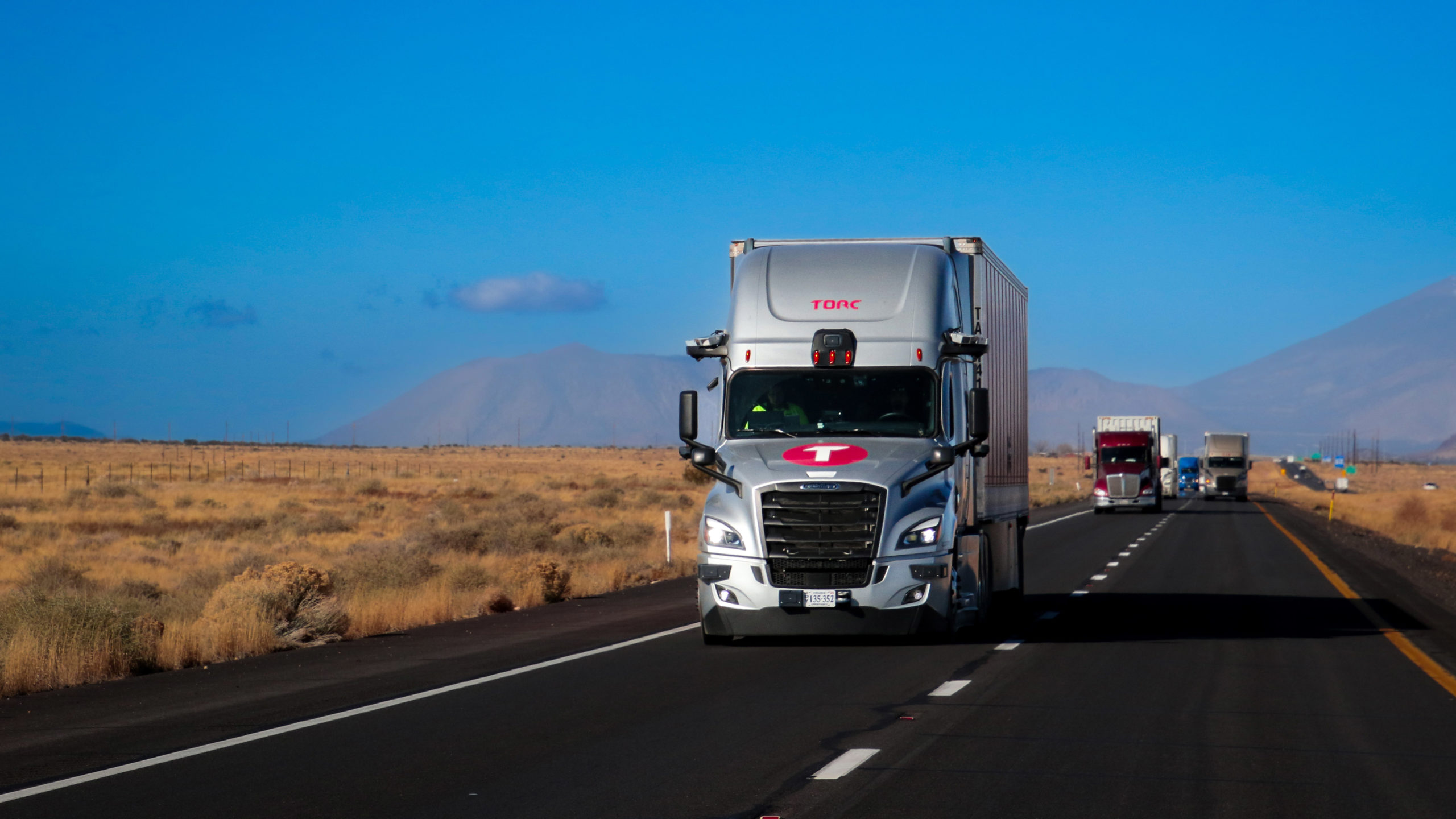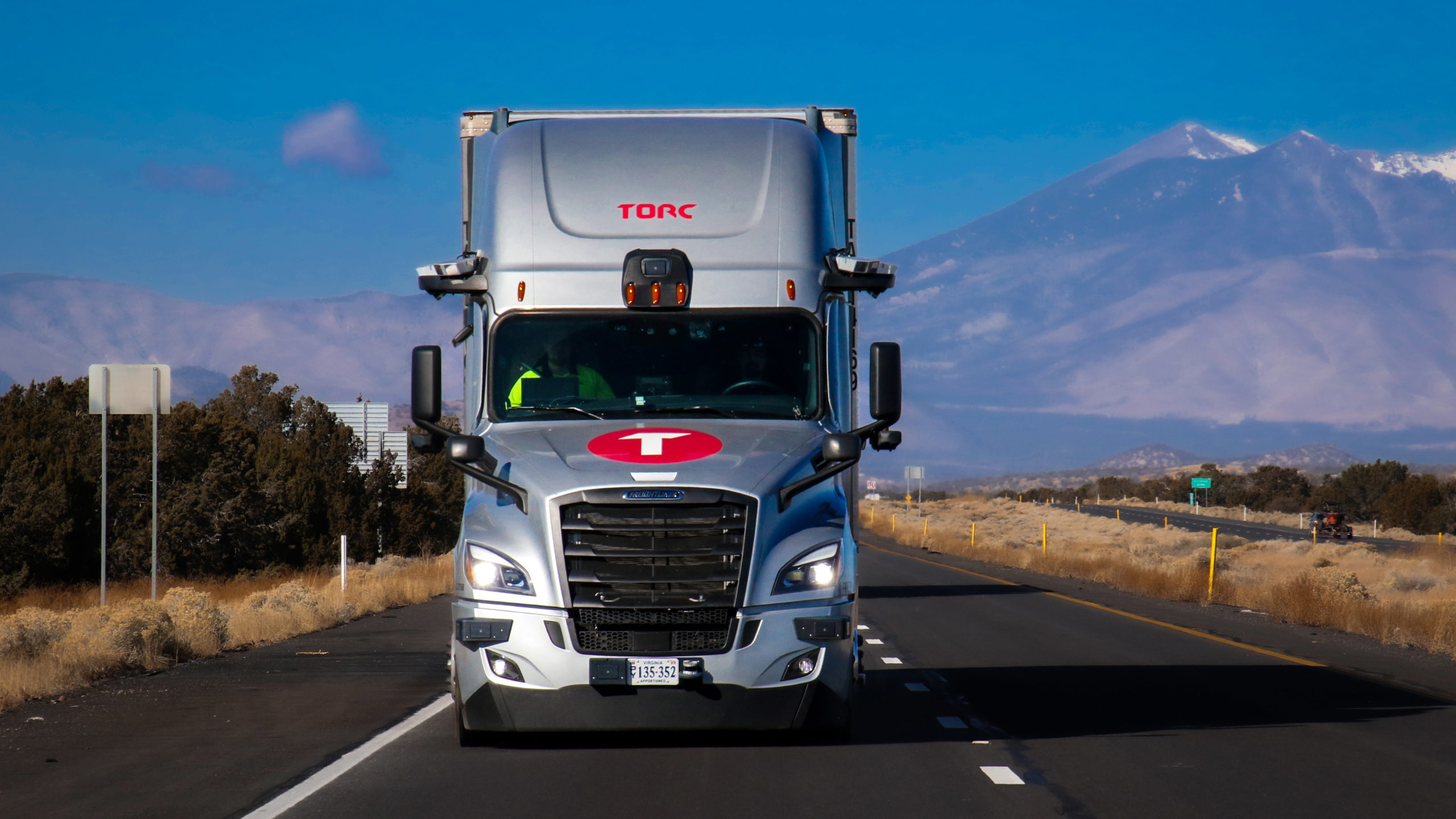As our laser focus on bringing self-driving semi-trucks to market continues to expand, we’re building toward a scalable product and putting our test fleet to work on highways across the United States. We are excited to announce the expansion of our autonomous testing in the state of Arizona.
After mapping these desert highways and working closely with the Arizona DOT, our autonomous test fleet embarked on initial routes through this cactus-laden landscape last month.
This marks a milestone in our goal to expand in the southwest freight corridor and adds to our current testing states: Virginia, New Mexico, and Texas.
When it comes to its testing environment, Arizona contains multitudes: mountains, valleys, and a variety of traffic conditions provide additional testing grounds for honing our capabilities. Additionally, hubs of freight activity such the roads connecting to Phoenix are key points for an autonomous truck company looking to expand their horizons. Torc’s future autonomous trucking pursuits focus on long-haul applications, increasing capacity for transport across long stretches of highway.
Aside from its physical advantages for our testing technology, we also look to Arizona because of its wholehearted support of this new technology. Arizona’s cooperation with autonomous driving companies aligns with our approach to work with state governments on the future of transportation.
The Southwest Freight Corridor and Autonomous Vehicles
In over-the-road trucking, Arizona is a key part of the southwest freight corridor. By expanding in Arizona, we can strategically connect key states and routes to maximize the length of our eventual long-haul network.
The initial use case for our self-driving semi-trucks is built for hub-to-hub freight transport. Human drivers will haul loads from first-mile locations to “hubs” or transfer stations. From there, Torc’s autonomous truck will take over the middle-mile journey by transporting the load from the hub, across federal highways, to another hub station near the final destination. Last-mile deliveries to more complex urban roads or off-highway warehouses will still be transported with a human driver at the wheel.
Arizona is a key state for building hub-to-hub routes because of the sheer volume of freight that moves through this state. In 2012 alone, more than 30,000 trucks transported 10,000,000 tons of freight through the southwestern corridor, which often includes Arizona. With the addition of autonomous trucks, we have the opportunity to increase shipping capacity through this sector, adding efficiency and safe practices for consumers, drivers, and highway users alike.
Self-Driving Trucks in Arizona: Highway Grade
The Copper State has a lot to offer a self-driving truck company like Torc, beginning with the landscape. From the flat roads through Phoenix through to the Grand Canyon in the north, Arizona’s highs are high and its lows are especially low. As I-40 weaves through the desert landscape, so does the highway grade.
On certain stretches of 1-40, the highway grade can climb as much as 7%, meaning that the road will rise or fall a certain amount per 100 feet, given a certain stretch of miles. For semi-trucks, including our self-driving 18-wheelers, the ability to handle grade is incredibly important. Grade affects vehicle speed and vehicle control. As a semi-truck descends, it requires adjustment of controls such as the brake and engine brake. Autonomous vehicles must safely adjust for different grades – and account for their weight and size when it comes to the physics of slowing down or stopping.
This is part of the reason why we’re testing in Arizona. We’re no stranger to mapping an area with severe highway grades; we regularly test our autonomous semi-trucks in the mountains around our headquarters in Blacksburg, VA and elevated highways in New Mexico. However, testing in new and varied areas is an integral part of making sure that our self-driving semi-trucks can launch safely and scale easily.
Arizona provides a unique landscape for said purposes. We’re testing in Arizona to enhance our capabilities in true over-the-road environments and evaluating how our autonomous trucks can work logistically with major fleets for middle-mile deliveries.


